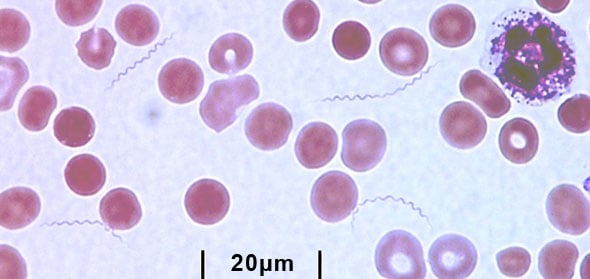Symptoms
Clinical Disease

Peripheral blood smear. The TBRF bacteria are long and spiral-shaped. The circular objects are red blood cells. The irregular purple object in the top right corner is a white blood cell.
Tick-borne relapsing fever (TBRF) is a rare infection linked to sleeping in rustic cabins, particularly cabins in mountainous areas of the western United States. The main symptoms of TBRF are high fever (e.g., 103° F), headache, muscle and joint aches. Symptoms can reoccur, producing a telltale pattern of fever lasting roughly 3 days, followed by 7 days without fever, followed by another 3 days of fever. Without antibiotic treatment, this process can repeat several times.

General timeline for TBRF relapse intervals.
Page last reviewed: October 15, 2015
Content source: Centers for Disease Control and Prevention, Centers for Disease Control and Prevention
National Center for Emerging and Zoonotic Infectious Diseases (NCEZID), National Center for Emerging and Zoonotic Infectious Diseases (NCEZID)
Division of Vector-Borne Diseases (DVBD)
Division of Vector-Borne Diseases (DVBD)